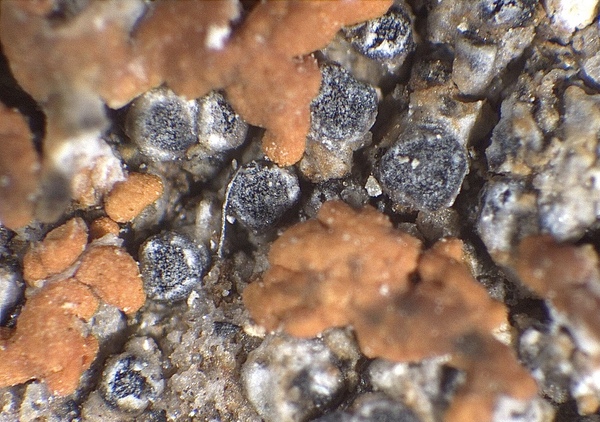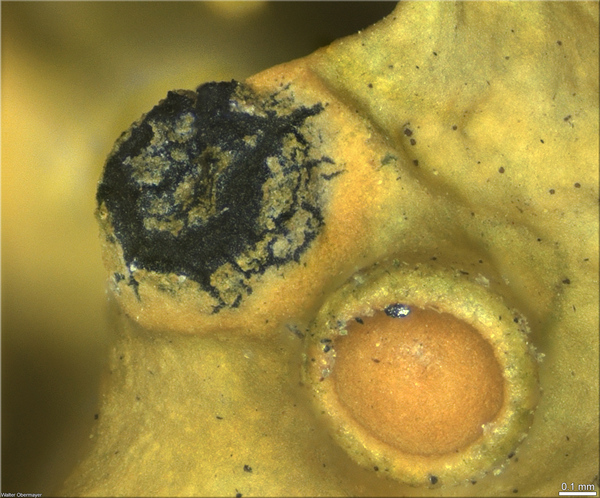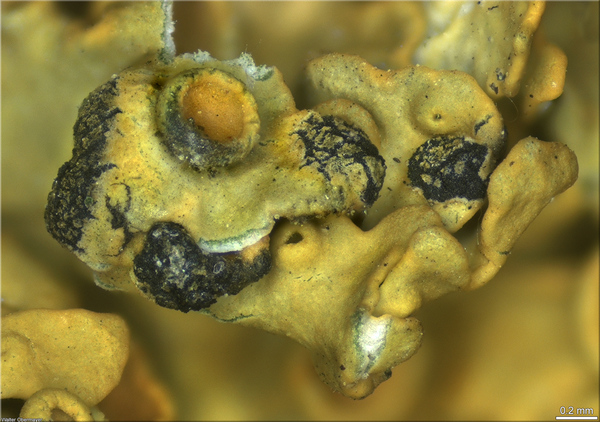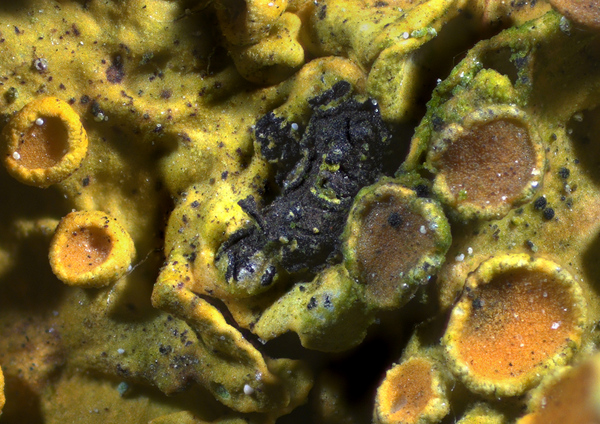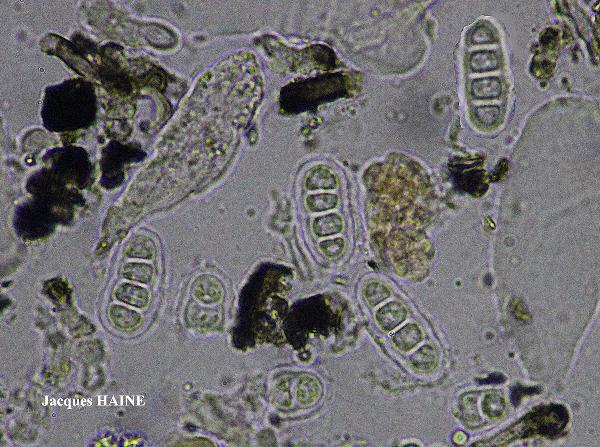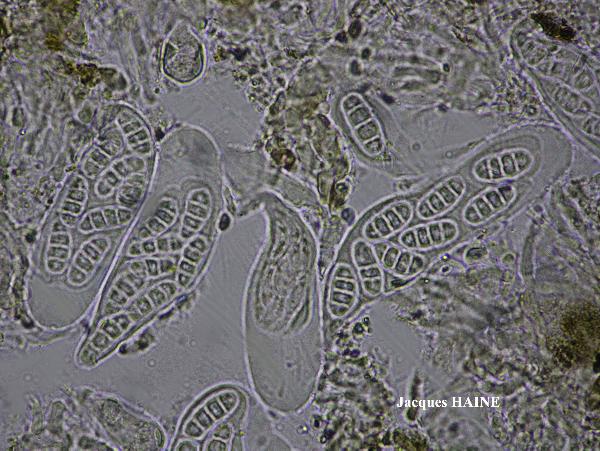Phacothecium varium (Tul.) Trevis.
Linnaea, 27: 298, 1856. Basionym: Phacopsis varia Tul. - Ann. Sci. Nt. Bot., sèr. 2, 17: 125, 1852.
Synonyms: Arthonia varia (Tul.) Jatta; Celidium varium (Tul.) Körb.; Lecidea physciaria Nyl.; Leciographa physciaria (Nyl.) H. Olivier; Opegrapha physciaria (Nyl.) D. Hawksw. & Coppins
Distribution: N - Lomb (Brackel 2016), Emil (Brackel 2016), Lig (TSB 33405, Brackel 2016). C - Tosc (Herb. von Brackel 1355), Laz (Brackel & Puntillo 2016, Brackel 2016), Abr (Brackel & Puntillo 2016, Brackel 2016), Mol (Brackel 2020), Sar (Brackel & Berger 2019). S - Camp (Brackel 2016, 2021), Pugl (Brackel 2016), Cal (Brackel & Puntillo 2016, Brackel 2016), Si (Nimis & al. 1994, Grillo & al. 2002, Grillo & Caniglia 2004, Hafellner 2009, Brackel 2016).
Description: Thallus inapparent, not lichenized, the hyphae developing within the thalli of Xanthoria-species. Apothecia black, distinctly hemiangiocarpic, aggregated into dense clusters of 1-5, at first round and with a slit-like disc, then becoming irregular or lobed, the exposed discs separated by sharp excipular margin, up to 0.7 x 0.2 mm. Proper exciple carbonized, laterally 20-30 μm thick, extending below the hymenium, K-; epithecium brown, K-; hymenium colourless, 60-70 μm high, I+ red, K/I+ blue; hypothecium colourless to pale brown, 30-50 μm high. Asci (4-6)8-spored, fissitunicate, cylindrical-clavate, with a reduced ocular chamber, and a I-, K/I- wall, without a hemiamyloid apical ring. Ascospores 3-septate, hyaline but turning brownish when overmature, oblong or slightly tapering towards one end, (12-)14-17 x (4-)5-6(-7) μm, surrounded by a thin gelatinous sheath, with a brownish verruculose ornamentation when mature. Pycnidia black, ellipsoid to spherical, the wall K+ brown-red. Microconidia bacilliform, 4-7.5 x c. 1 μm. Photobiont absent. Spot tests: all negative. Chemistry: without lichen substances. Note: a lichenicolous fungus growing on species of Xanthoria; certainly more widespread in Italy.
Growth form: Lichenicolous fungus
Substrata: bark and rocks
Reproductive strategy: mainly sexual
paras Xanthoria spp.
Commonnes-rarity: (info)
Alpine belt: absent
Subalpine belt: absent
Oromediterranean belt: absent
Montane belt: extremely rare
Submediterranean belt: absent
Padanian area: absent
Humid submediterranean belt: very rare
Humid mediterranean belt: very rare
Dry mediterranean belt: absent

Predictive model
Herbarium samples
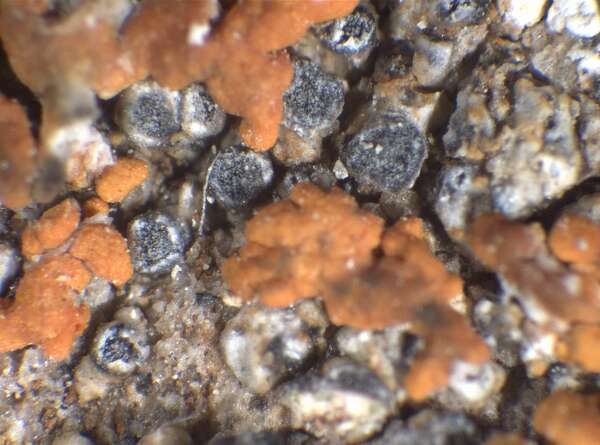

P.L. Nimis; Owner: Department of Life Sciences, University of Trieste
Herbarium: TSB (33406)
2003/01/23
on the host, Xanthoria elegans
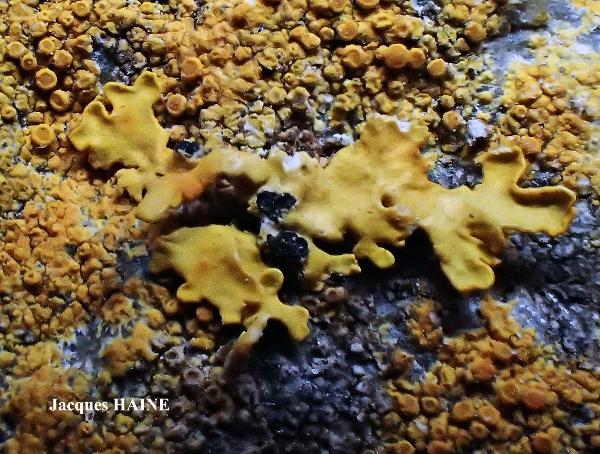
Jacques Haine - Source: http://www.lichensmaritimes.org/index.php?task=fiche&lichen=1225&lang=en
France, Crozon

Jacques Haine - Source: http://www.lichensmaritimes.org/index.php?task=fiche&lichen=1225&lang=en
France, Crozon
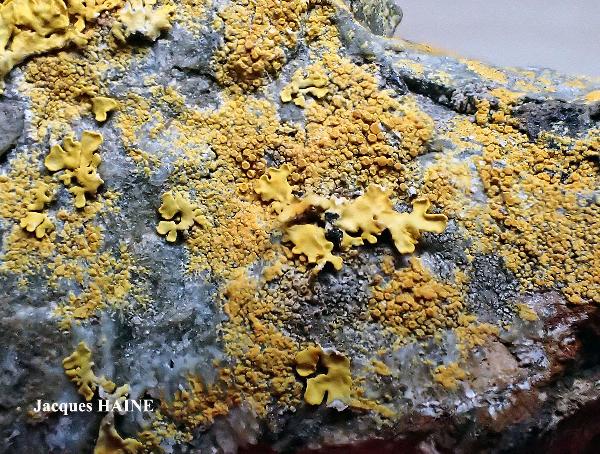
Jacques Haine - Source: http://www.lichensmaritimes.org/index.php?task=fiche&lichen=1225&lang=en
France, Crozon
on Xanthoria parietina
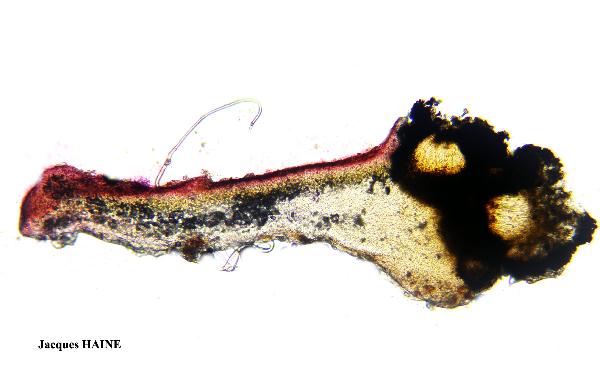
Jacques Haine - Source: http://www.lichensmaritimes.org/index.php?task=fiche&lichen=1225&lang=en
France, Crozon
on Xanthoria parietina
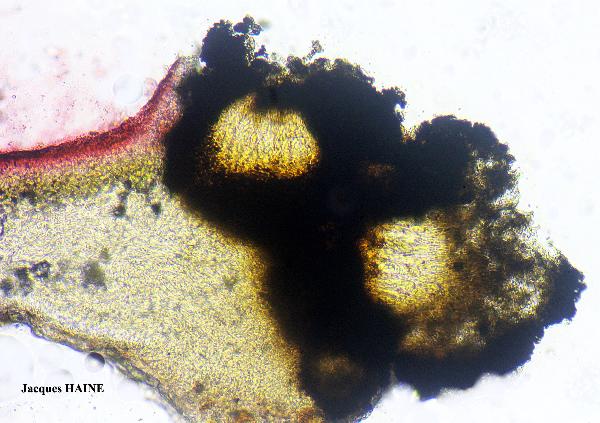
Jacques Haine - Source: http://www.lichensmaritimes.org/index.php?task=fiche&lichen=1225&lang=en
France, Crozon
on Xanthoria parietina
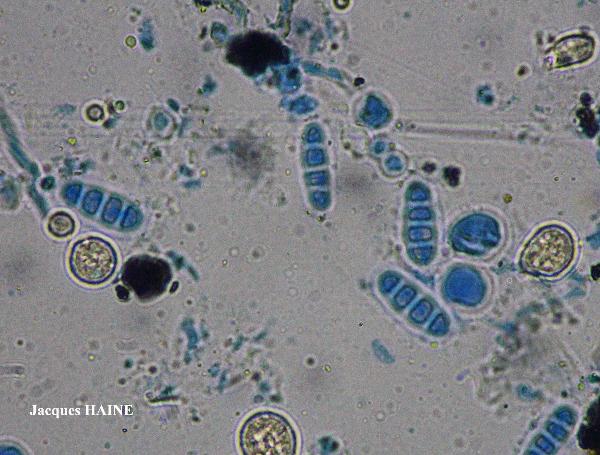
Jacques Haine - Source: http://www.lichensmaritimes.org/index.php?task=fiche&lichen=1225&lang=en
France, Crozon
on Xanthoria parietina
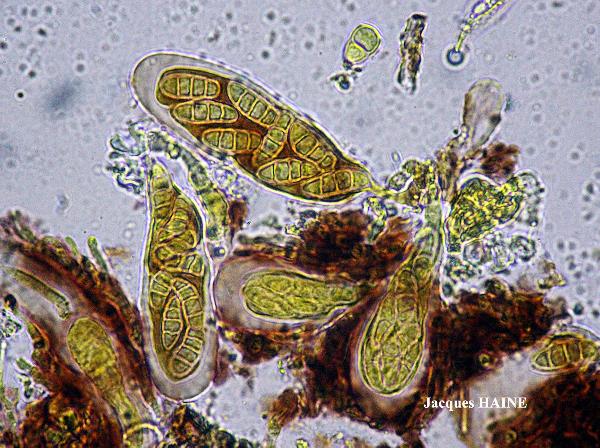
Jacques Haine - Source: http://www.lichensmaritimes.org/index.php?task=fiche&lichen=1225&lang=en
France, Crozon
on Xanthoria parietina
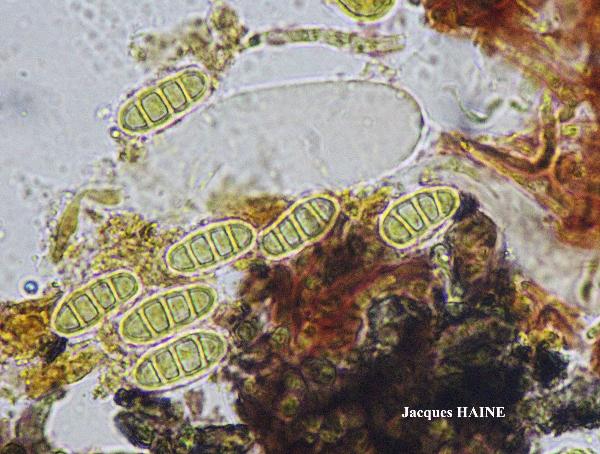
Jacques Haine - Source: http://www.lichensmaritimes.org/index.php?task=fiche&lichen=1225&lang=en
France, Crozon
on Xanthoria parietina
Growth form: Lichenicolous fungus
Substrata: bark and rocks
Reproductive strategy: mainly sexual
paras Xanthoria spp.
Commonnes-rarity: (info)
Alpine belt: absent
Subalpine belt: absent
Oromediterranean belt: absent
Montane belt: extremely rare
Submediterranean belt: absent
Padanian area: absent
Humid submediterranean belt: very rare
Humid mediterranean belt: very rare
Dry mediterranean belt: absent

Predictive model
| Herbarium samples |


P.L. Nimis; Owner: Department of Life Sciences, University of Trieste
Herbarium: TSB (33406)
2003/01/23
on the host, Xanthoria elegans

Jacques Haine - Source: http://www.lichensmaritimes.org/index.php?task=fiche&lichen=1225&lang=en
France, Crozon

Jacques Haine - Source: http://www.lichensmaritimes.org/index.php?task=fiche&lichen=1225&lang=en
France, Crozon

Jacques Haine - Source: http://www.lichensmaritimes.org/index.php?task=fiche&lichen=1225&lang=en
France, Crozon
on Xanthoria parietina

Jacques Haine - Source: http://www.lichensmaritimes.org/index.php?task=fiche&lichen=1225&lang=en
France, Crozon
on Xanthoria parietina

Jacques Haine - Source: http://www.lichensmaritimes.org/index.php?task=fiche&lichen=1225&lang=en
France, Crozon
on Xanthoria parietina

Jacques Haine - Source: http://www.lichensmaritimes.org/index.php?task=fiche&lichen=1225&lang=en
France, Crozon
on Xanthoria parietina

Jacques Haine - Source: http://www.lichensmaritimes.org/index.php?task=fiche&lichen=1225&lang=en
France, Crozon
on Xanthoria parietina

 INDEX FUNGORUM
INDEX FUNGORUM
 GBIF
GBIF
